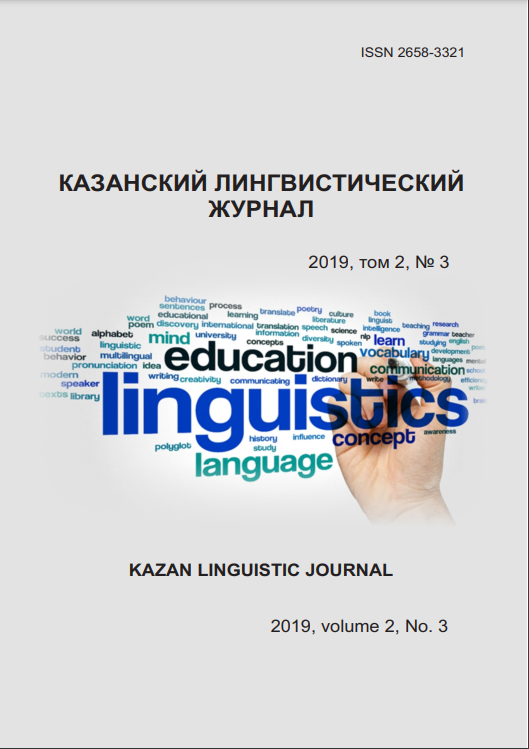Athanasius Kircher’ theory of the Chinese language appearance
Keywords:
hermeneutics, linguistics, Chinese, Athanasius Kircher, theory of language, figurismAbstract
This study presents the main provisions of the theory the origin of Chinese language, presented by Athanasius Kircher (1602 – 1680). Kircher, who known primarily for his
studies on the Coptic language and attempts to decipher Egyptian hieroglyphics, was also interested in Chinese. In modern historiography he is called among the predecessors of figurism – hermeneutic doctrine, whose Jesuit followers support the doctrine of the single primordial Verity given in the divine Revelation, which Noah’s descendants spread across all nations and continents. Kircher considered Egyptian hieroglyphics to be the invention of Mercury Trismegistus. Ham, Noah’ Son, identified with Zoroaster brought hieroglyphs to China. Kircher did not associate hieroglyphics with the spoken language, and therefore offered only a symbolic interpretation of ideographic writing. The Chinese letters, according to his opinion, was not the bearer of the secret, but he considered it a universal mechanism, providing mutual understanding of the speakers of different Chinese dialects, as well as people of Japan, Korea and Vietnam, whose languages differed from Chinese.
The article presents the first Russian translation of chapters 1 and 5 of the sixth part of the treatise China illustrata, which sets forth the views of A. Kircher on these subjects.
References
Литература
Ломанов А.В. Христианство и китайская культура. М.: Вост. лит., 2002.
Назаров Н. Словари Амброджо Калепино и Памвы Беринды: между Византией и Ренессансом // Slavica Tergestina. 2016. №16. С. 170-183.
Эко У. Поиски совершенного языка в европейской культуре / Пер. с итал. А. Миролюбовой. СПб.: Александрия, 2007. 423 с.
Athanasius Kircher. The Last Man Who Knew Everything / ed. by Paula Findlen. L.: Routledge, 2004. 466 p.
Kircher-1 – Athanasii Kircheri… China monumentis qua sacris qua profanis
, nec non variis naturae et artis spectaculis, aliarumque rerum memorabilium argumentis illustrate… Amstelodami, 1667. 278 p.
Kircher-2 – La Chine D'Athanase Kirchere, illustrée de plusieurs monuments tant sacrés que profanes et de quantité de recherches de la nature & de l'art, Traduit du latin par François-Savinien Dalquié. Amsterdam, 1670. 367 p.
Kircher-3 – China illustrata. Translated by Dr. Charles D. Van Tuyl from the original 1677 Latin edition. [China monumentis, qua sacris qua profanis. illustrata] // URL https://htext.stanford.edu/content/kircher/china/kircher.pdf (accessed 27.01.2019)
Kircher-4 – Athanasii Kircheri e Soc. Jesu Turris Babel, siue Archontologia qua primo priscorum post diluvium hominum vita, mores rerumque gestarum magnitudo, secundo, turris fabrica civitatumque exstructio, confusio linguarum, & inde gentium transmigrationis. Amstelodami, 1679. 219 p.
Klöter H. The Language of the Sangleys: A Chinese Vernacular in Missionary Sources of the Seventeenth Century. Leiden: Brill, 2011. 411 p.
References
Eco, U., Mirolubova, A. (2007). Poiski sovershennogo yazyka v evropeyskoy kulture [The search for the perfect language in European culture: translated from Italian]. Saint Petersburg: Aleksandriya. 423 p. (In Russian).
Findlen, P. (2004). Athanasius Kircher. The Last Man Who Knew Everything. London: Routledge. 466 p. (In English)
Kircher-1 (1667) – Athanasii Kircheri… China monumentis qua sacris qua profanis , nec non variis naturae et artis spectaculis, aliarumque rerum memorabilium argumentis illustrate… Amstelodami. 278 p. (In Latin).
Kircher-2 (1670) – La Chine D'Athanase Kirchere, illustrée de plusieurs monuments tant sacrés que profanes et de quantité de recherches de la nature & de l'art, Traduit du latin par François-Savinien Dalquié. Amsterdam. 367 p. (In French).
Kircher-3 – China illustrata. Translated by Dr. Charles D. Van Tuyl from the original 1677 Latin edition. [China monumentis, qua sacris qua profanis. illustrata] // URL https://htext.stanford.edu/content/kircher/china/kircher.pdf (accessed 27.01.2019)
Kircher-4 (1679) – Athanasii Kircheri e Soc. Jesu Turris Babel, siue Archontologia qua primo priscorum post diluvium hominum vita, mores rerumque gestarum magnitudo, secundo, turris fabrica civitatumque exstructio, confusio linguarum, & inde gentium transmigrationis. Amstelodami. 219 p. (In Latin).
Klöter, H. (2011). The Language of the Sangleys: A Chinese Vernacular in Missionary Sources of the Seventeenth Century. Leiden: Brill. 411 p. (In English)
Lomanov, A.V. (2002). Khristianstvo i kitayskaya kultura [Christianity and Chinese Culture]. Moscow, Vostochnaya Literatura. 446 p. (In Russian).
Nazarov, N. (2015). Slovari Ambrodzho Kalepino i Pamvy Berindy: mezhdu Vizantiyey i Renessansom [Ambrogio Kalepino and Pamva Bérinda's dictionaries: between Byzantium and Renaissance]. Slavica Tergestina, 16, p. 170-183. (In Russian).






